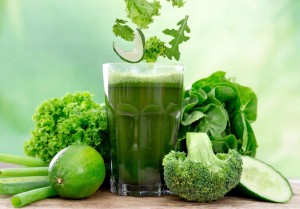 Broccoli is a cruciferous vegetable. It is rich in vitamins, minerals and antioxidants that can help prevent the development of various diseases.
Broccoli is a cruciferous vegetable. It is rich in vitamins, minerals and antioxidants that can help prevent the development of various diseases.
Researchers have touted the powerful disease-fighting properties of this vegetable. From reducing cancer risk to boosting immune health, broccoli can work wonders for your body.
However, it is important to know that some of broccoli’s nutrients may get lost when it isn’t cooked the right way. For one, you might be overcooking it, eliminating much of the essential compounds that are crucial for its beneficial effects and how it interacts with other nutrients.
The right way to cook broccoli
Studies show that there are better ways of preparing broccoli to optimize its benefits. To ensure that you preserve broccoli’s nutrient content, try the following cooking methods:
1. Pairing broccoli with broccoli sprouts
A study published in the British Journal of Nutrition found that combining broccoli florets with broccoli sprouts may double the vegetable’s anti-cancer effect. The sprouts refer to the younger broccoli that is just a couple of days old. And results show that they contain 10 to 100 times higher levels of sulforaphane than a mature head of broccoli. In fact, an ounce of the sprouts contains as much sulforaphane as one and a half pounds of broccoli.
Sulforaphane is a natural plant compound found in many cruciferous vegetables. It is linked to better heart health and digestion and is currently being studied for its potential anti-cancer properties. Test-tube and animal studies, for example, showed that it could reduce both the size and number of various types of cancer cells.
Given these benefits, combining mature broccoli with younger broccoli will give you more of this nutrient than eating either one alone.
2. Steaming broccoli for only two to four minutes
Myrosinase is an important enzyme in broccoli that is needed to form sulforaphane. However, people tend to overcook the vegetable by steaming it for too long or exposing it to too much heat.
In fact, a study found that putting broccoli in a microwave oven for more than two minutes can destroy this enzyme. Moreover, steaming for at least seven minutes can also trigger the same effect.
Instead, experts recommend steaming the vegetable for a few minutes to preserve this enzyme while making sure it is clean and heated. In fact, research shows that steaming broccoli for three to four minutes increases sulforaphane formation.
If cooking in higher temperatures, however, you should try to keep below 284 F, as going beyond this temperature can lead to the loss of glucosinolates like glucoraphanin, an antioxidant.
3. Eating broccoli and broccoli sprouts raw
You can also eat raw broccoli, as this method is one of the better ways to ensure you can get the most out of its powerful nutrients. A study found that participants who ate raw broccoli absorbed sulforaphane faster and in higher amounts compared to those who ate it cooked.
 If you decide to eat it raw, however, you have to thoroughly wash the vegetables as they may contain pesticides and other harmful substances. Worse, given its physical structure, broccoli may hide antibiotic-resistant superbugs if not washed properly.
If you decide to eat it raw, however, you have to thoroughly wash the vegetables as they may contain pesticides and other harmful substances. Worse, given its physical structure, broccoli may hide antibiotic-resistant superbugs if not washed properly.
Moreover, it is advisable to only wash the vegetable right before eating it, as wet broccoli can develop mold and become limp. In this case, you might opt to store unwashed broccoli in loose or perforated bags in the refrigerator.
With broccoli’s powerful nutrients and anti-cancer properties, eating this vegetable is highly recommended to prevent various diseases. But if you’re not cooking it the right way, the benefits that it can provide in an ideal situation may get lost. The cooking and preparatory portion, therefore, is just as important as the very food you eat.
Written by Virgilio Marin for Cancer News, September 14, 2020
